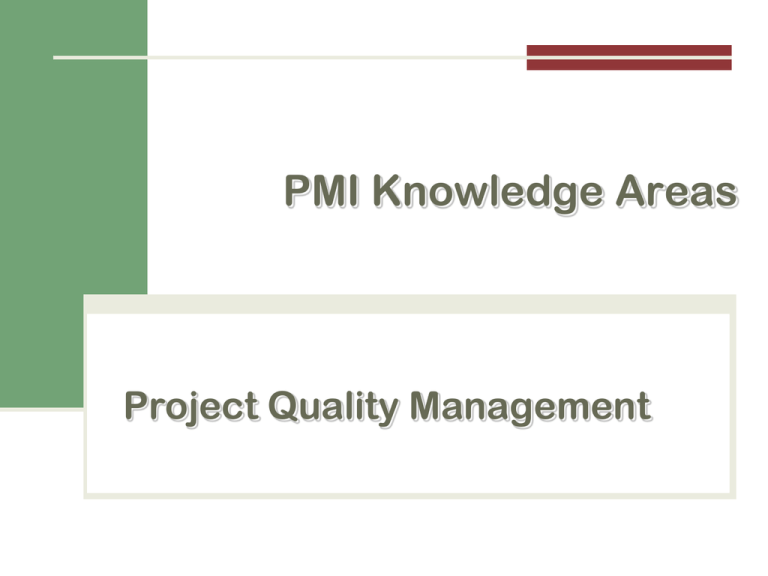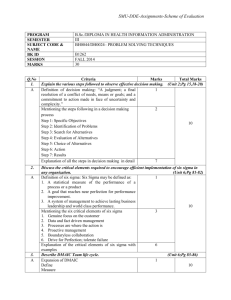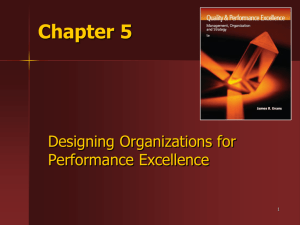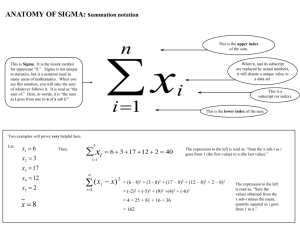10_Ch08b
advertisement

PMI Knowledge Areas Project Quality Management The Importance of Project Quality Management Scope Time Cost 2 Six Sigma Six Sigma is “a comprehensive and flexible system for achieving, sustaining, and maximizing business success. Six Sigma is uniquely driven by close understanding of customer needs, disciplined use of facts, data, and statistical analysis, and diligent attention to managing, improving, and reinventing business processes”* *Pande, Peter S., Robert P. Neuman, and Roland R. Cavanagh, The Six Sigma Way, New York: McGraw-Hill, 2000, p. xi. 3 PM Network: Winning Pair Are Six Sigma and PMBOK different? Can these be combined? How do they mesh? Example 4 Basic Information on Six Sigma The target for perfection is the achievement of no more than 3.4 defects per million opportunities The principles can apply to a wide variety of processes Six Sigma projects normally follow a five- phase improvement process called DMAIC Information Technology Project Management, Seventh Edition 5 DMAIC DMAIC is a systematic, closed-loop process for continued improvement that is scientific and fact based DMAIC stands for: Define Measure Analyze Improve Control 6 Six Sigma Projects Use Project Management The training for Six Sigma includes many project management concepts, tools, and techniques Examples 7 Six Sigma and Statistics The term sigma means standard deviation Standard deviation measures how much variation exists in a distribution of data Information Technology Project Management, Seventh Edition 8 Table 8-2. Sigma and Defective Units Information Technology Project Management, Seventh Edition 9 Six 9s of Quality Six 9s of quality is a measure of quality control equal to 1 fault in 1 million opportunities In the telecommunications industry, it means 99.9999 percent service availability or 30 seconds of down time a year This level of quality has also been stated as the target goal for the number of errors in a communications circuit, system failures, or errors in lines of code 10 Improving Information Technology Project Quality Several suggestions for improving quality for IT projects include: Establish leadership that promotes quality Understand the cost of quality Focus on organizational influences and workplace factors that affect quality Follow maturity models 11 Maturity Models Maturity models are frameworks for helping organizations improve their processes and systems Software Quality Function Deployment Model Capability Maturity Model Integration CMMI Levels CMMI levels, from lowest to highest, are: Incomplete Performed Managed Defined Quantitatively Managed Optimizing Companies may not get to bid on government projects unless they have a CMMI Level 3 13 PMI’s Maturity Model PMI released the Organizational Project Management Maturity Model (OPM3) in December 2003 Addresses standards for excellence in project, program, and portfolio management best practices and explains the capabilities necessary to achieve those best practices 14 Chapter Summary Project quality management ensures that the project will satisfy the needs for which it was undertaken Main processes include: Plan quality Perform quality assurance Perform quality control 15





